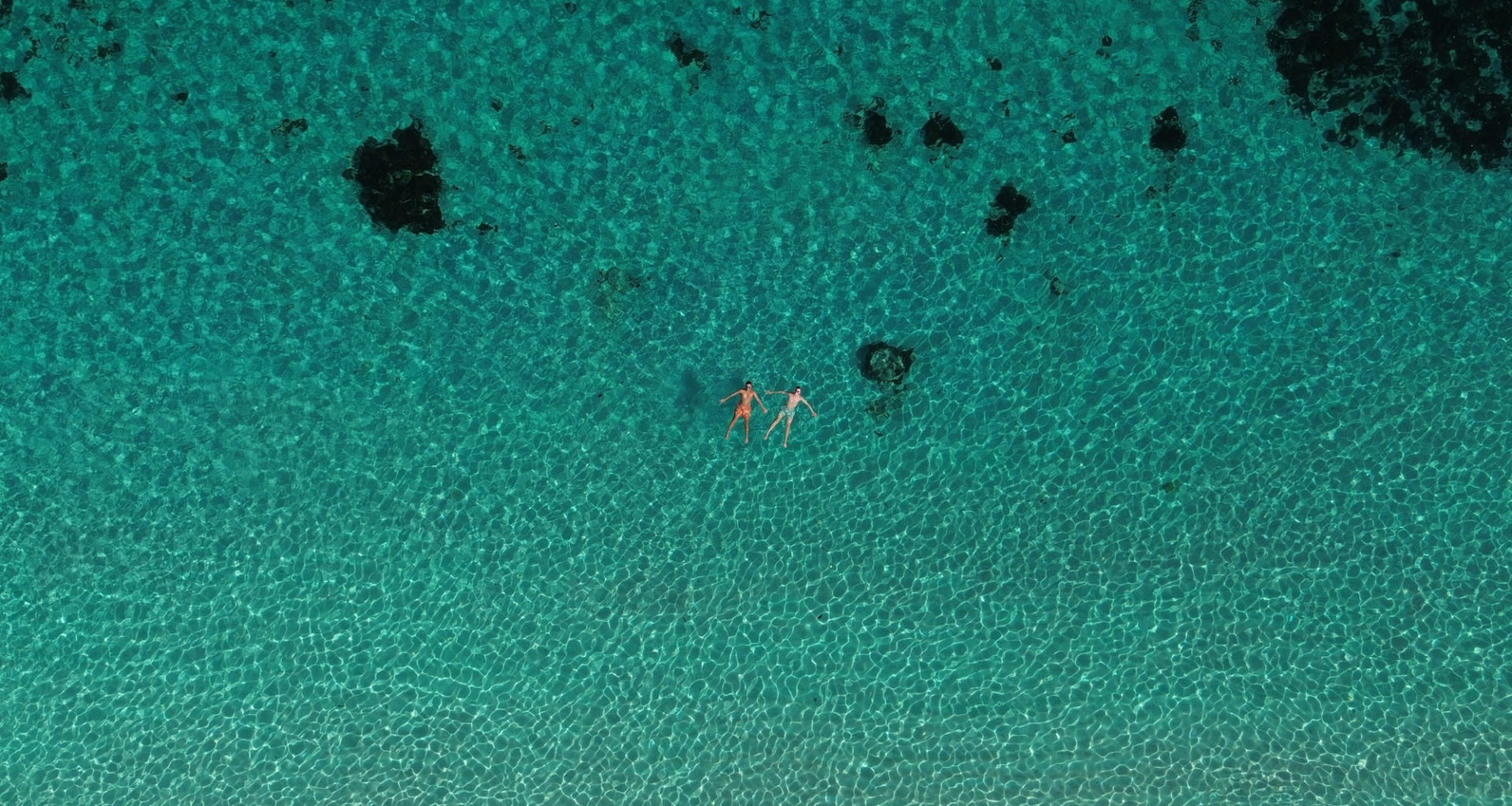Three Days Sailing Around Komodo
This was my first time on a boat for a few days and let me tell you, I had so much fun! There’s something magical about setting sail that makes the world feel like it’s on a different planet. Time seems to slow down, the noise fades away, and all that’s left is the gentle sea breeze, the salty scent of the ocean, and the next island that catches your eyes.
That’s exactly what happened when we hopped on a cozy liveaboard boat in Labuan Bajo and set sail to explore Komodo National Park—one of Indonesia’s most incredible hidden gems. Over the next three days, we went swimming with majestic manta rays, hiked to breathtaking viewpoints, lounged on pink beaches that looked like something out of a postcard, and even got up close and personal with real-life dragons! It was an adventure we’ll cherish forever.
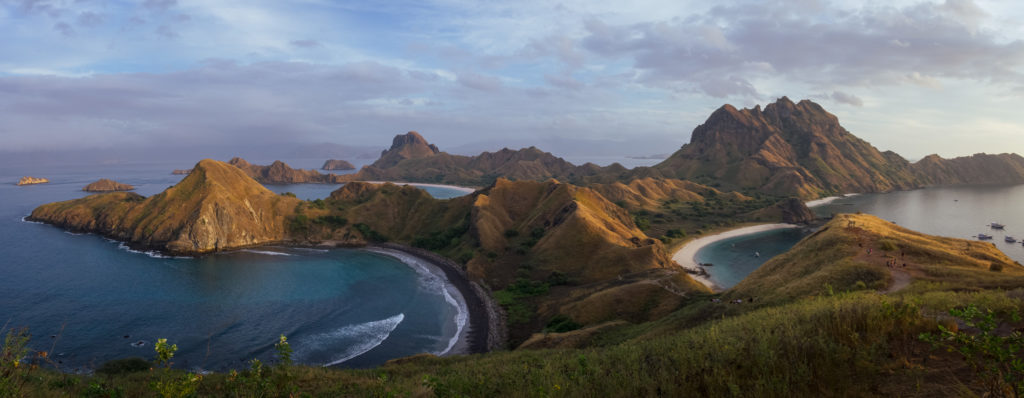
Table of Contents
- Three Days Sailing Around Komodo
- Choosing a Komodo 3D2N Liveaboard: Boat, Operator & Cabin Tips
- Day 1 – Turtles, Sandbanks & Sailing into Sunset
- Day 2 – Sunrise at Padar & the Komodo Dragons of Rinca
- Day 3 – Baby Sharks & One Last Swim with Turtles
- Would We Do It Again?
- What to Pack for a Komodo Liveaboard Trip:
- Komodo Liveaboard Practical Info & FAQ
- Related guides
Choosing a Komodo 3D2N Liveaboard: Boat, Operator & Cabin Tips
Planning a 3-day, 2-night liveaboard trip around Komodo National Park can feel overwhelming. With so many tour operators and boats to choose from—some with glowing reviews and others warning about cockroaches and leaky ceilings—it’s hard to know who to trust.
At first, we considered winging it and booking a boat upon arrival in Labuan Bajo. But since we were traveling during peak season and wanted a cabin with an ocean view, we decided to book in advance. Here’s what we learned:
Which Cabin to Choose on a Komodo Liveaboard?
Most boats offer three types of cabins:
- Upper Deck Cabins – Usually the most expensive, more private, and further away from the engine noise.
- Main Deck Cabins – A good middle-ground with windows and easier access.
- Lower Deck Cabins – Typically the cheapest, but some don’t have windows and are closer to the engine.
Some boats also offer shared dorm-style rooms for solo travelers. Personally, I didn’t want a lower-deck cabin—I don’t like the idea of sleeping below or right at sea level, especially without a window.
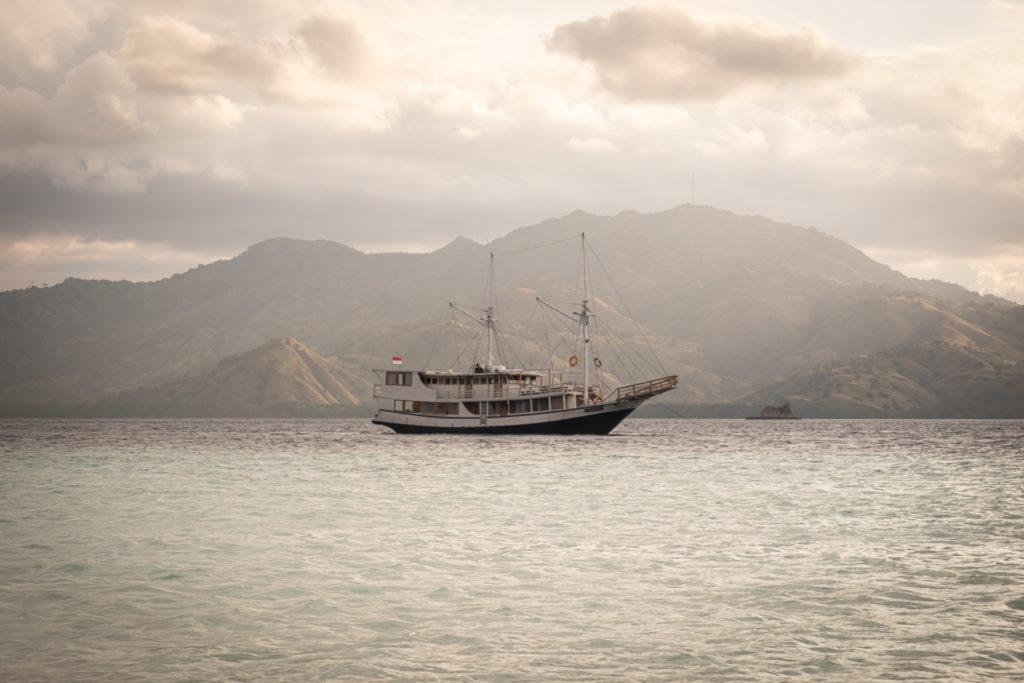
Should you book your Komodo tour in advance?
Yes. We started searching about two weeks before our trip and quickly found that many of the more reputable boats were already fully booked. Booking ahead gives you more choice and saves you from last-minute stress.
Which Company & Boat Did We Choose?
We narrowed it down to two companies that had space: Travass Life and LongLastingTrip.
At first, we preferred Travass Life’s boat based on photos. Even though the boat available on our dates wasn’t directly managed by them, it still looked promising. Unfortunately, our experience with Travass Life was frustrating. Communication was slow and inefficient: I’d reply within minutes, yet they’d respond 24 hours later. By the time we got to payment, the cabin was already gone. Despite their many positive reviews online, our experience was disappointing. When I raised the issue, they blamed the time difference—which felt like a poor excuse given how quickly we replied, well within working hours.
In contrast, LongLastingTrip was a breeze to deal with.
- Communication was smooth and professional.
- Payment was easy (credit card).
- Everything from booking to pickup and the end of the trip was well-organized.
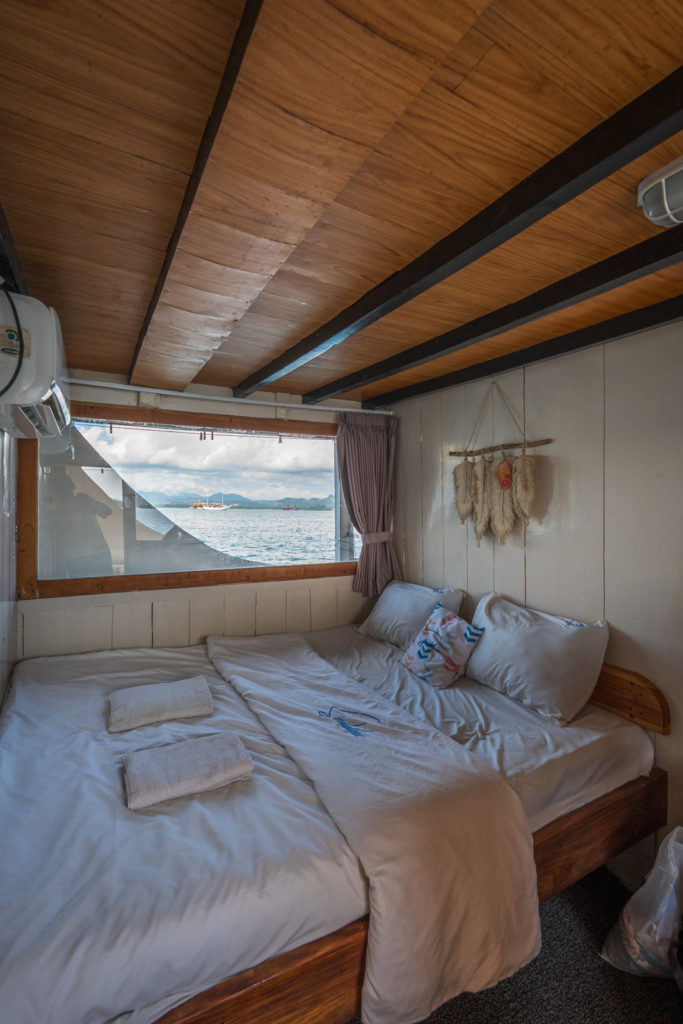
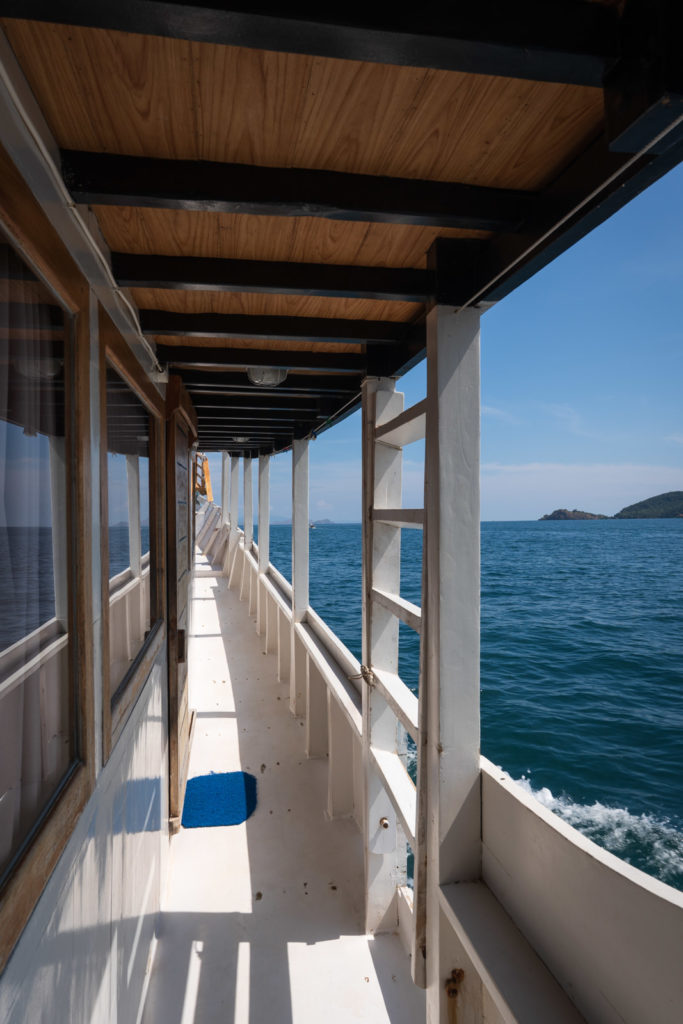
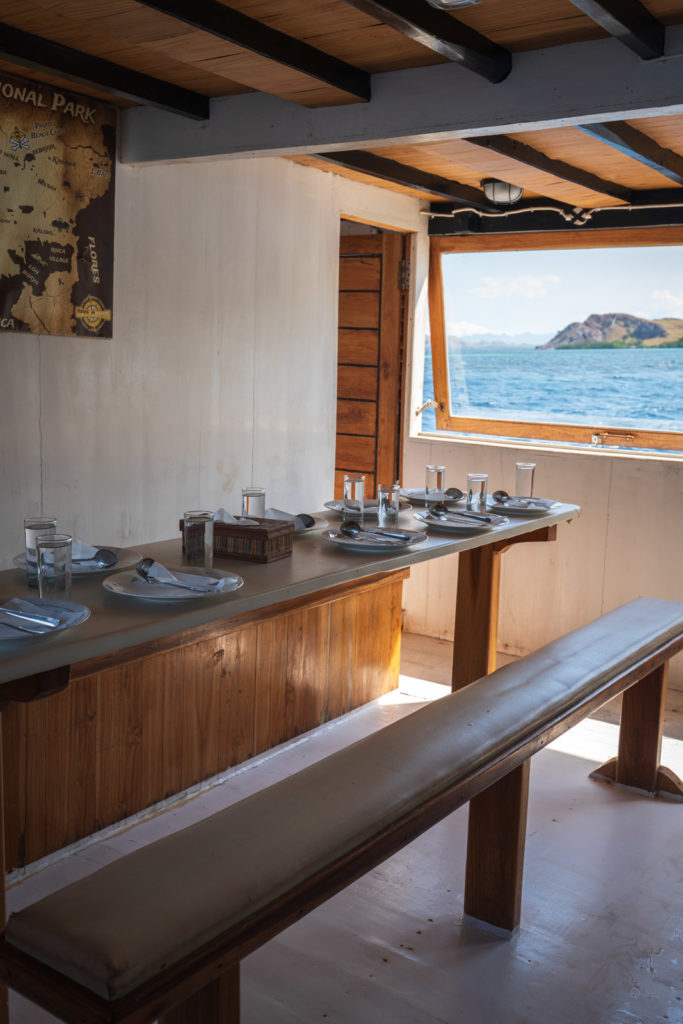
We joined the Sipakatau boat. It was clean, comfortable (especially considering the price, which was lower than many other boats), and the food was both tasty and plentiful. Safety was taken seriously, with life jackets onboard and a proper safety briefing.
Special shoutout to Tony and Lino, our fantastic guides. Every morning and evening they gave clear briefings about the day’s plan and what to pack. They also took amazing photos of the group, so we all left with great memories and some professional-looking shots.
Day 1 – Turtles, Sandbanks & Sailing into Sunset
The journey started around 11:30 am, when we boarded Sipakatau, our home for the next three days – a cozy wooden boat, simple but charming. The crew welcomed us with big smiles and fresh drinks and just like that we were off, leaving Labuan Bajo behind and sailing into the open sea.
Sebuyar Island
Our first stop was Sebuyar Island. As soon the boat stopped, we grabbed our masks and fins and jumped straight into the water. Within minutes, we spotted our first turtle of the trip, calmly gliding past the coral. For the next hour or so, we swam around the coral spotting all different kind fishes, from clown fishes to parrot fishes and even angels fish, the whole cast of Finding Nemo was there.
Back on the boat, lunch was served. A delicious spread of local warm dishes and refreshing salads were waiting for us, a bunch of hungry, wet snorkelers. With full stomachs and sunscreen reapplied, we headed to Manta Point, one of the spots I was excited the most. This time, the water was deeper and the current much stronger, but the moment we saw our first manta ray, everything else faded. Graceful, massive and somehow scary, they danced beneath us like. We floated there in silence, just watching them passing by.
Taka Makassar
Our final stop of the day was Taka Makassar, a sandbank that looks like it was dropped from the sky. It’s a tiny strip of white sand surrounded by water in every shade of blue you can imagine. We lay there for a while, relaxing and enjoying the views of the boats and the islands around. Tip: bring water sandals or water shoes with you, since the sand is covered with coral and small rocks.
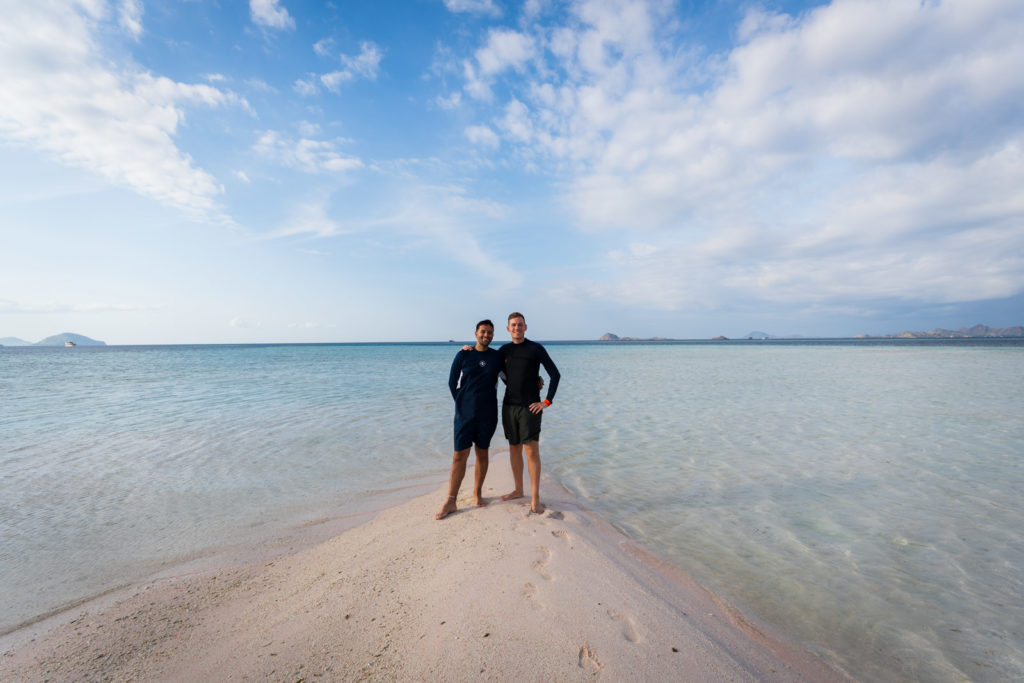
Back on the boat, was time to have a small snack, prepared by the crew while sharing our stories and getting to know the rest of the guests. As the sun began to set, the boat set sail once more, this time towards Padar Island. We watched the sun dip into de ocean, while relaxing on the open upper deck of our liveaboard boat and drink not so cold beers, which we didn’t mind at all. By the time we reached our anchoring point it was dark and windy. Dinner was served, as once again a delicious warm spread was waiting for us. That night under the stars, the boat shook us to what would be an almost sleepless night.
Day 2 – Sunrise at Padar & the Komodo Dragons of Rinca
Sunrise at Padar Island
The alarm rang at 4 am and I wont lie, it hurt. Tired after a not so recharging night but excited for what was coming: hiking Padar island for a, hopefully, amazing sunrise. Still half asleep and sailing through darkness and a pitch Black Sea, we arrived at the shore and started our hike to the top of Padar Island. Step by step, we climbed the hill, guided by the light of our phones.
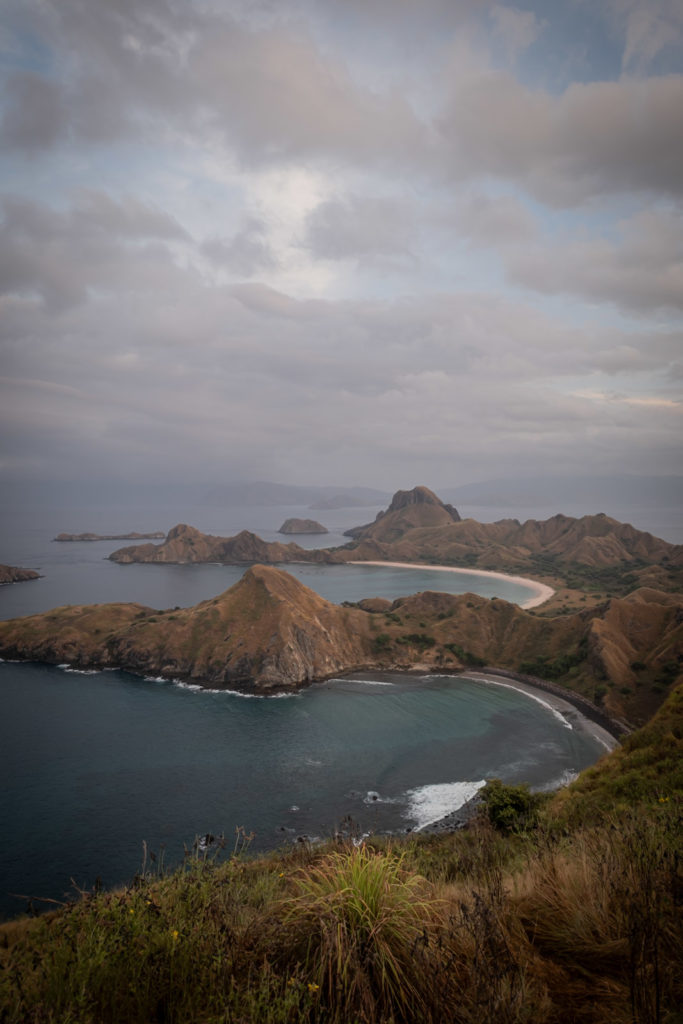

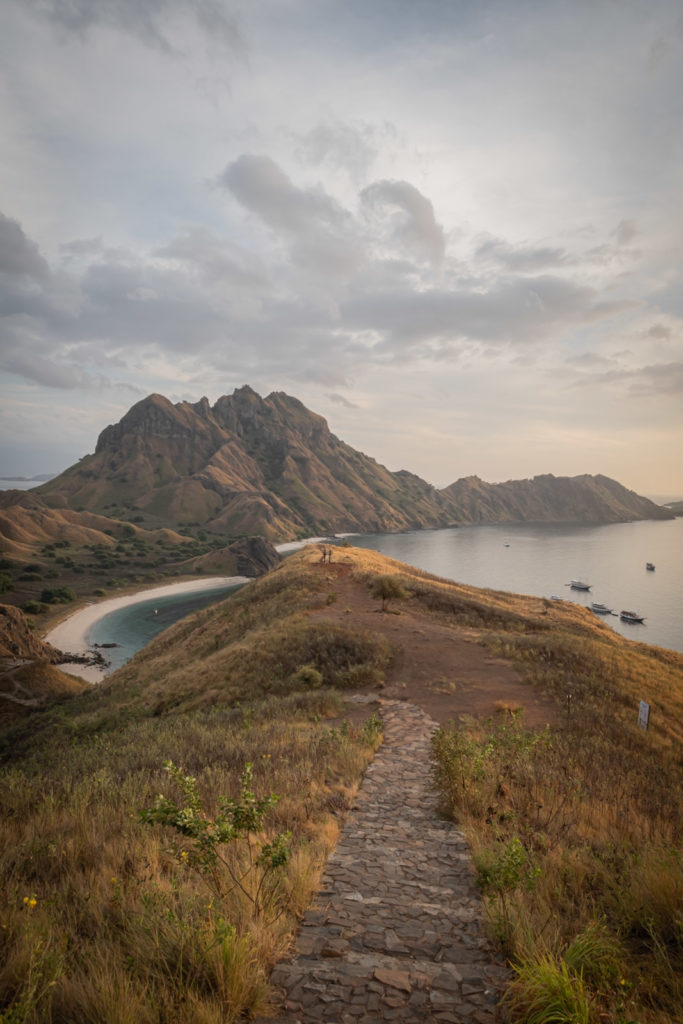
The hike was easy, approximately 1.5 km and took us around 40 to 45 min to reach the top. We reached the top, drenched in sweat due to the height humidity, found a place to seat, had some sipped some water and waited for the sun to show. The sunrise didn’t wow us like others we’d seen in different parts of Indonesia, but watching a new day begin in such a special place was still beautiful. Michiel and I wandered along the trail, stopping often to take photos of the stunning views.
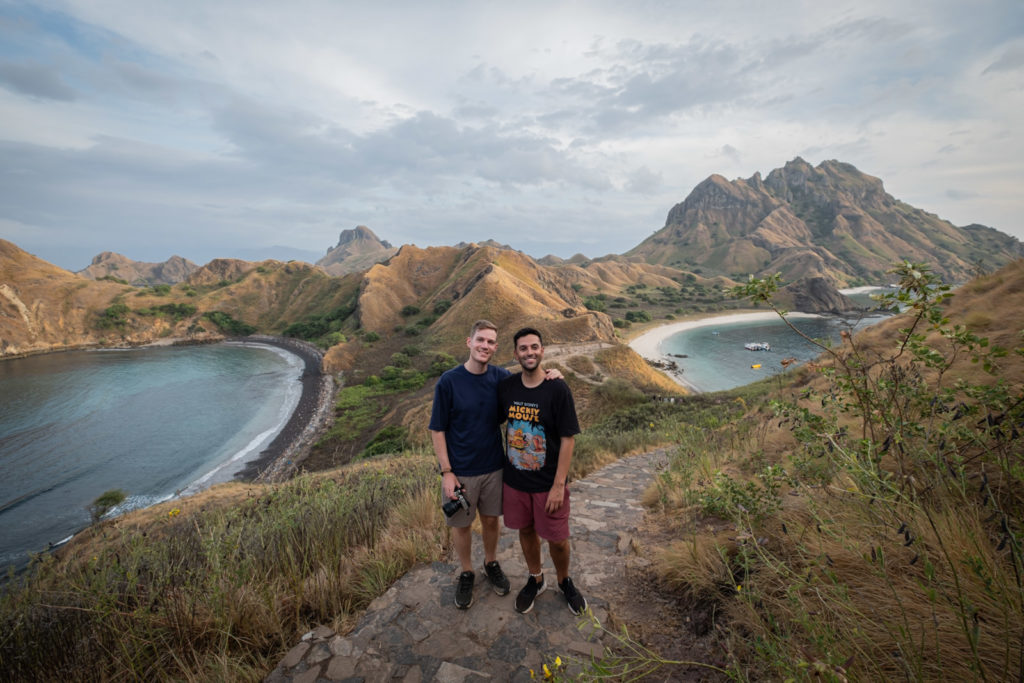
Padar Island is known for its three beaches, each one with a different color: a pink, a white and a black sand beach, making a unique sight when walking the trail down.
Relaxing in Pink Beach
Back on the boat, we were famish and breakfast was waiting for us. After enjoying some noodles, sunny side up eggs and French fries (why not right?), we made our way to Pink Beach, named after its soft pink colored sand made from crushed coral. While Michiel was droning, I swam and enjoyed the refreshing water. After hiking Padar Island, this was a much needed lounge time, just enjoying the views, relaxing and sunbathing.
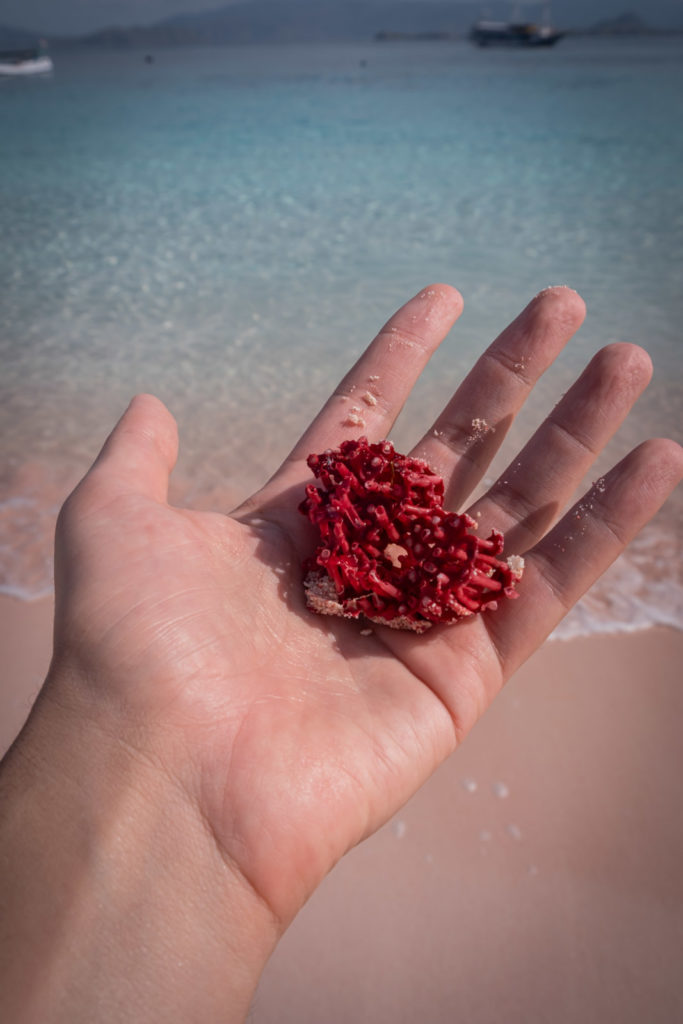
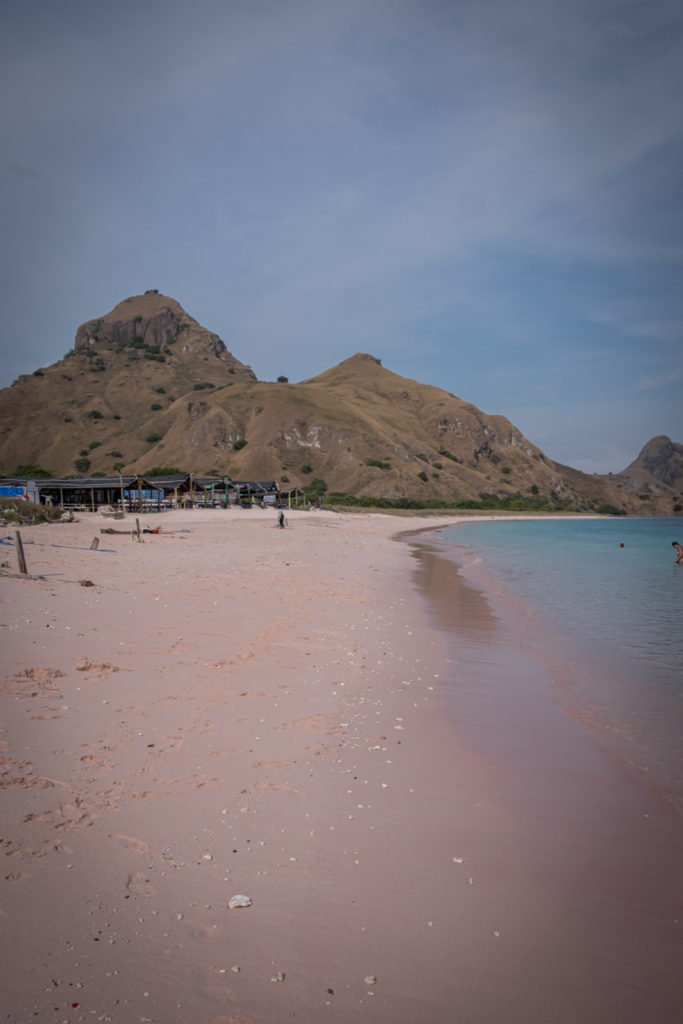
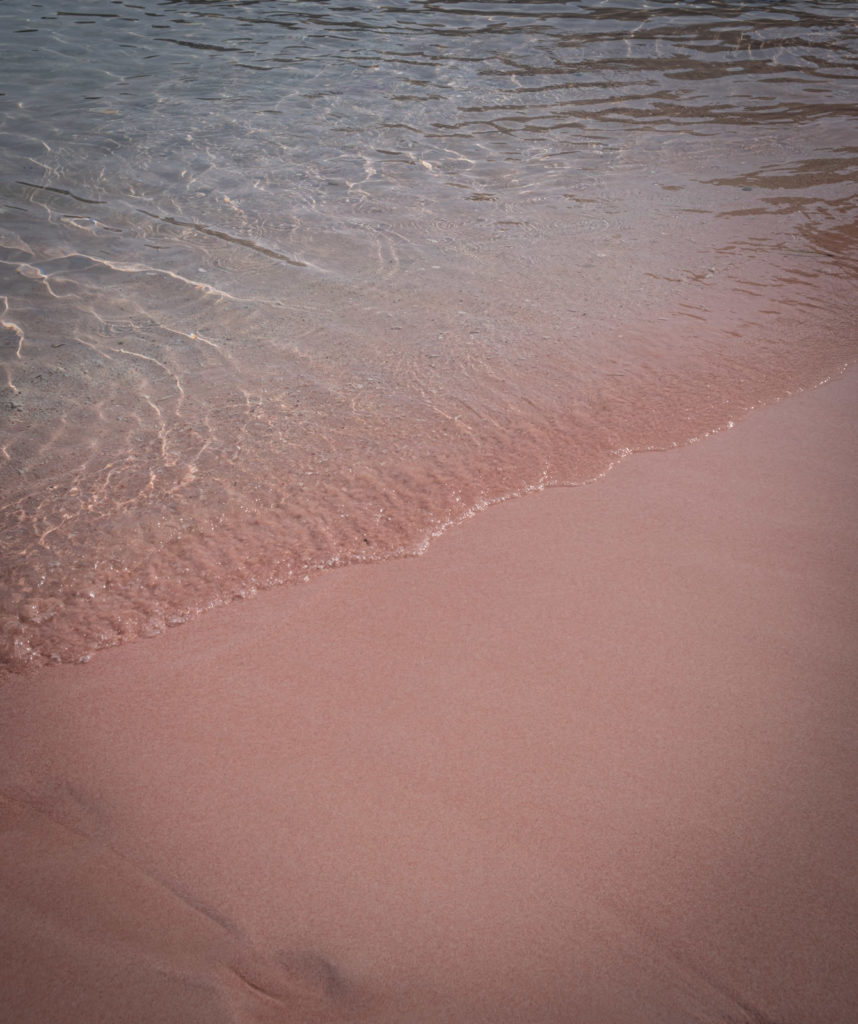
Rinca Island and Komodo Dragons
In the afternoon, the adventure continue as we sailed to Rinca Island, home of the Komodo dragons. The dragons are wild and live in their natural habitat, not in a zoo or a sanctuary. Rinca is part of Komodo National Park, a UNESCO World Heritage Site And one of the few places in the world where these dragons live freely. The area we visited is ranger managed, where there are marked trails and guided walks for safety. Rangers help monitor the dragons and protect visitors, but the animals are not kept enclosures, they roam the island naturally. So technically, I want to believe that we saw real, wild dragons, one of the world’s last living dinosaurs with just a bit of structure around it for conservation and safety.
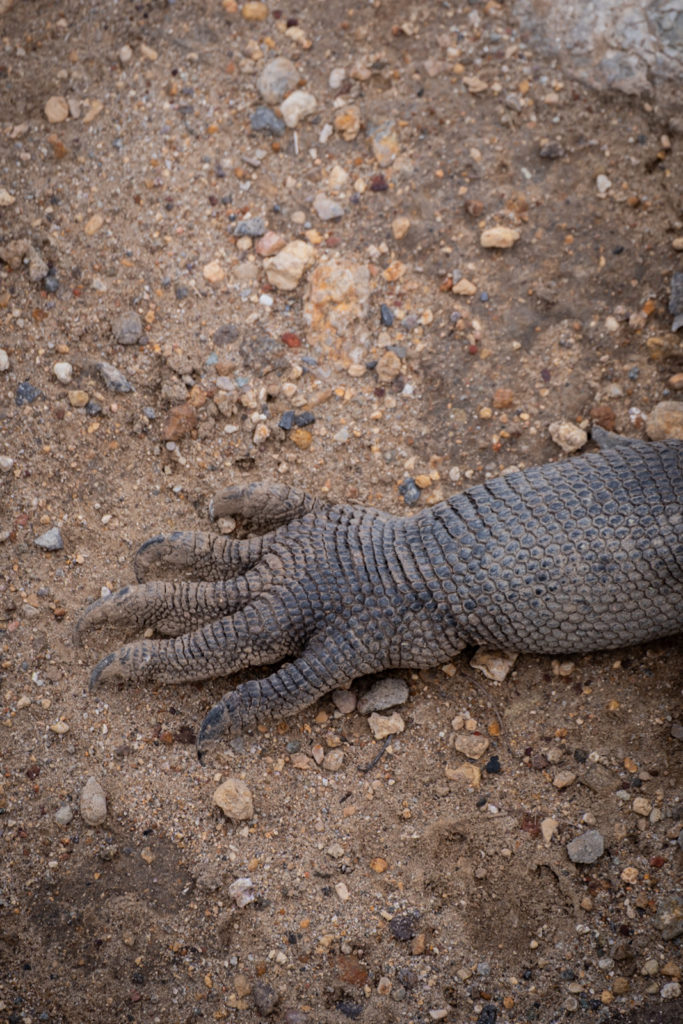
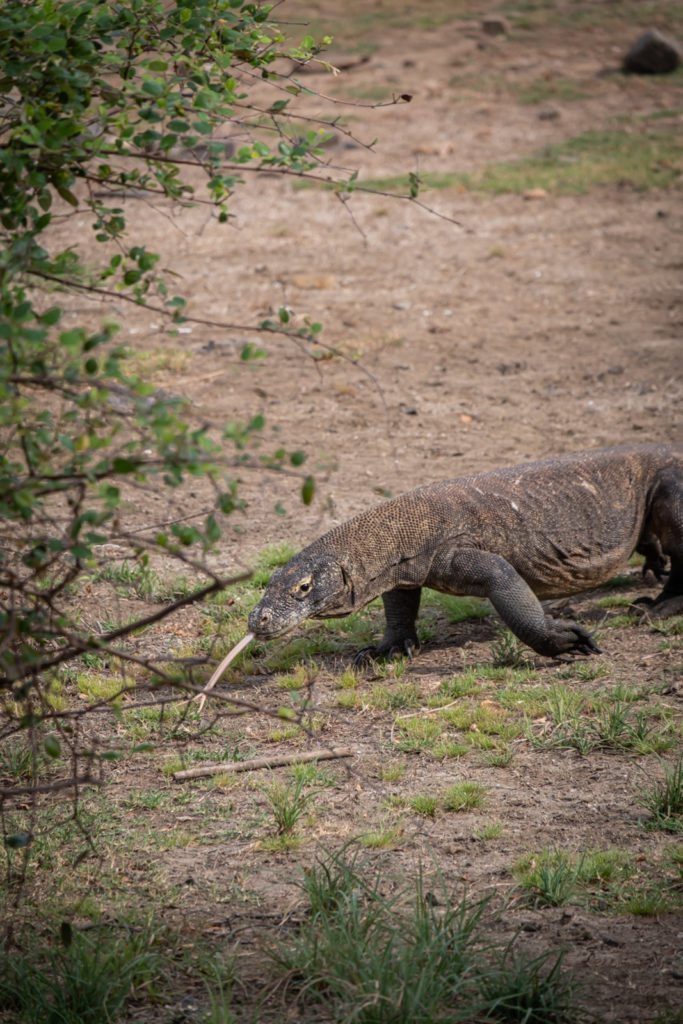
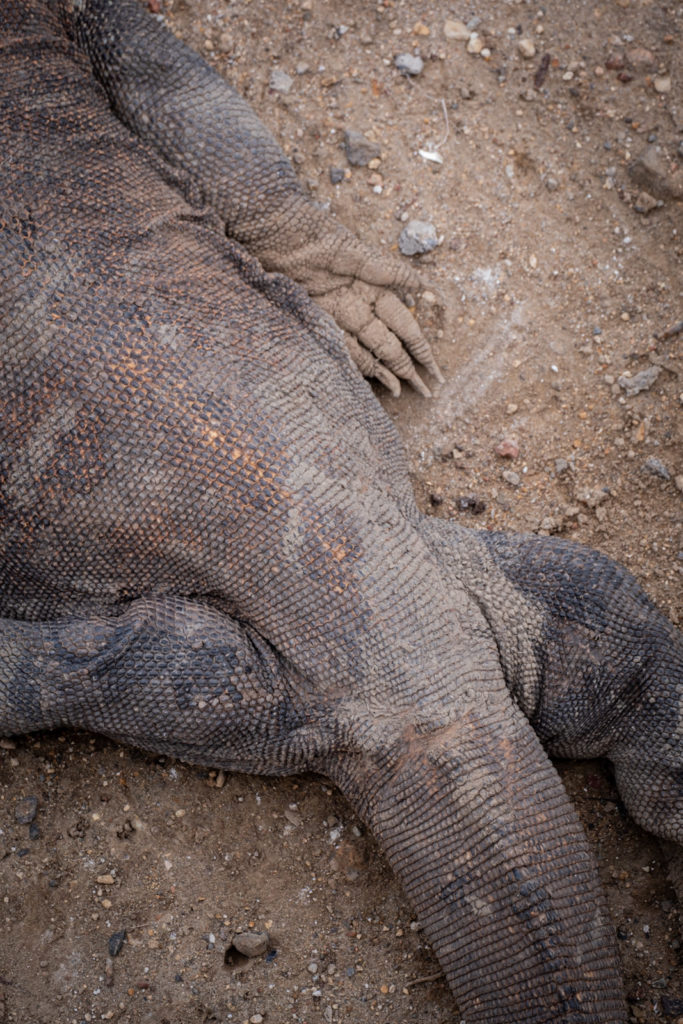
Kalong Island
Later that day things slowed down again. We anchored near Kalong Island, opened a couple of cold beers and waited. Just before sunset, the sky filled with thousands of flying foxes, huge fruit bats flying from the mangroves to the mountains. The entire sky turned alive and almost felt like you were in a movie or a different reality. As the last light disappeared, we sailed to Kelor Island and ended the day with another dinner on the deck.

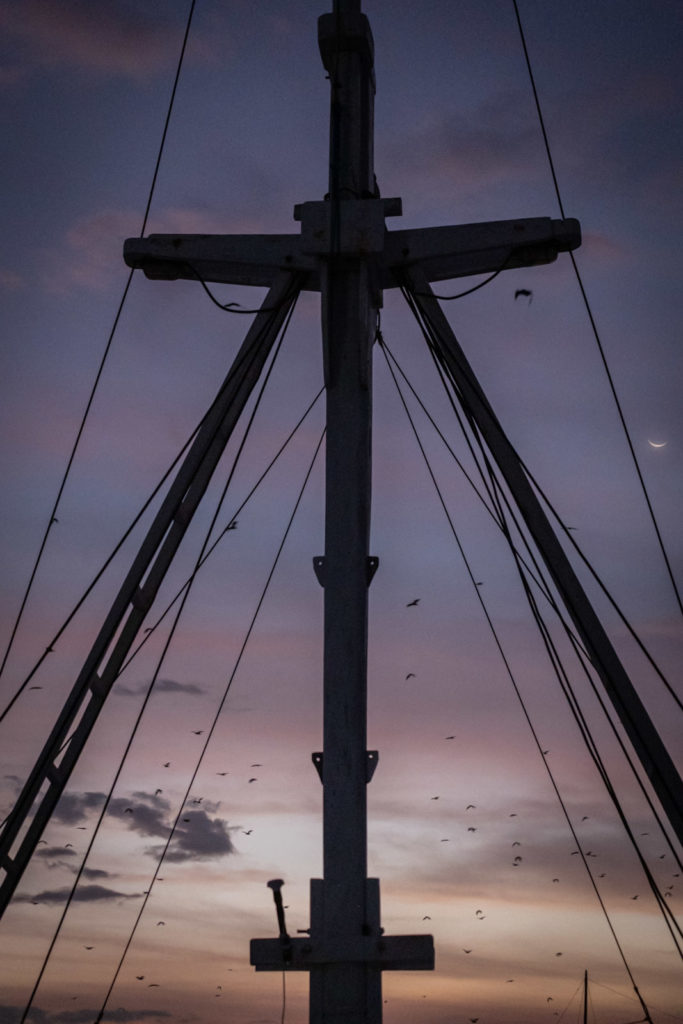
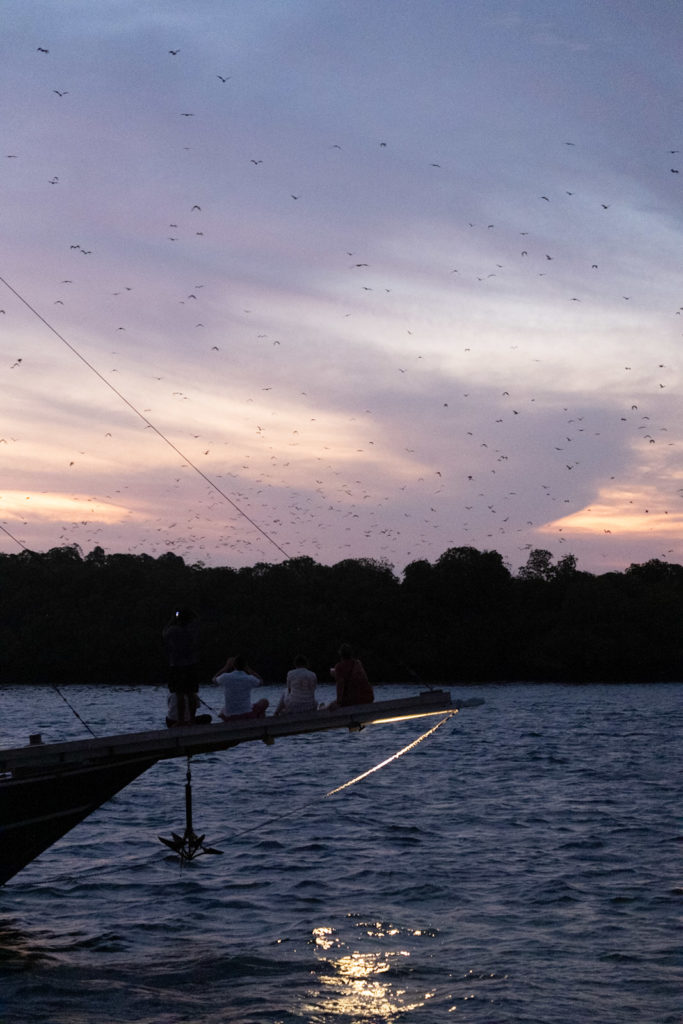
Day 3 – Baby Sharks & One Last Swim with Turtles
Kelor Island
After a better night of sleep, our final morning started slow and peaceful. After breakfast, we went ashore at Kelor Island, where a short hike brought us to a small viewpoint with panoramic views of the ocean and near by islands. The hike is less than 10 min. On the beach bellow, we relax, sunbathed and swam with baby sharks.
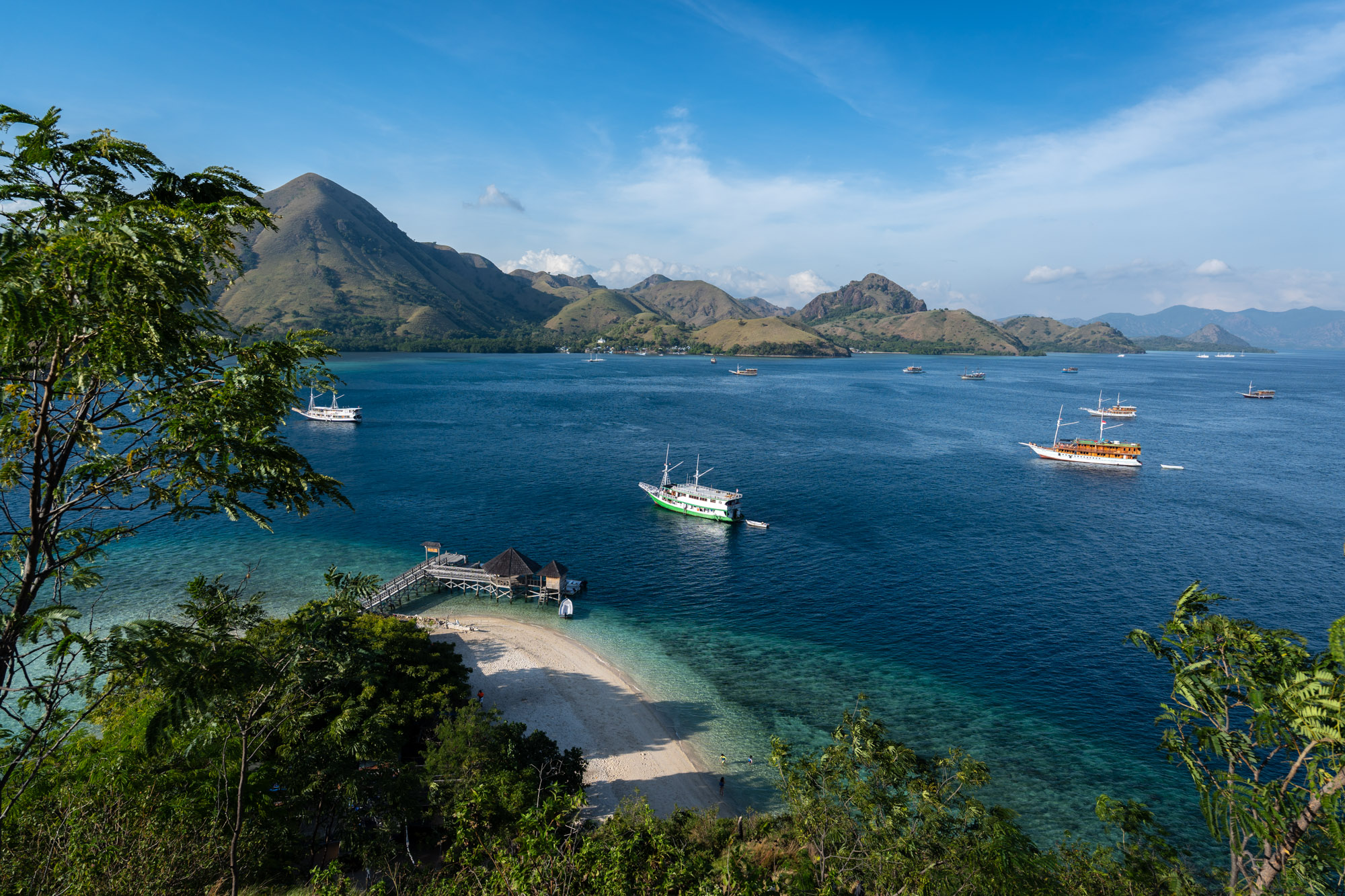
Manjarite Island
Our last stop was Manjarite Island and it ruined out to be one of the most beautiful snorkeling spots of the trip. The coral was colorful and full of life and just when we thought it couldn’t get better, we spotted not one, but four turtles swimming calmly around us. It was the perfect ending to a perfect journey. Back on the boat, lunch was served as we slowly cruised back to Labuan Bajo. The moods were high and everyone was talkative and happy, sharing where they were going next and exchanging social media and phone numbers.
Would We Do It Again?
In a heartbeat.
This trip was more than just visiting beautiful places—it was about moments. The silence underwater with a manta ray. The soft sunrise over Padar Island. The dragons that reminded us nature still has its wild, untouched corners. And the slow rhythm of the boat, gently reminding us to breathe, to pause, to just be. If you’re craving a different kind of escape—one where you’re surrounded by nature and carried by the tide—Komodo is calling. And trust us, it’s worth answering.
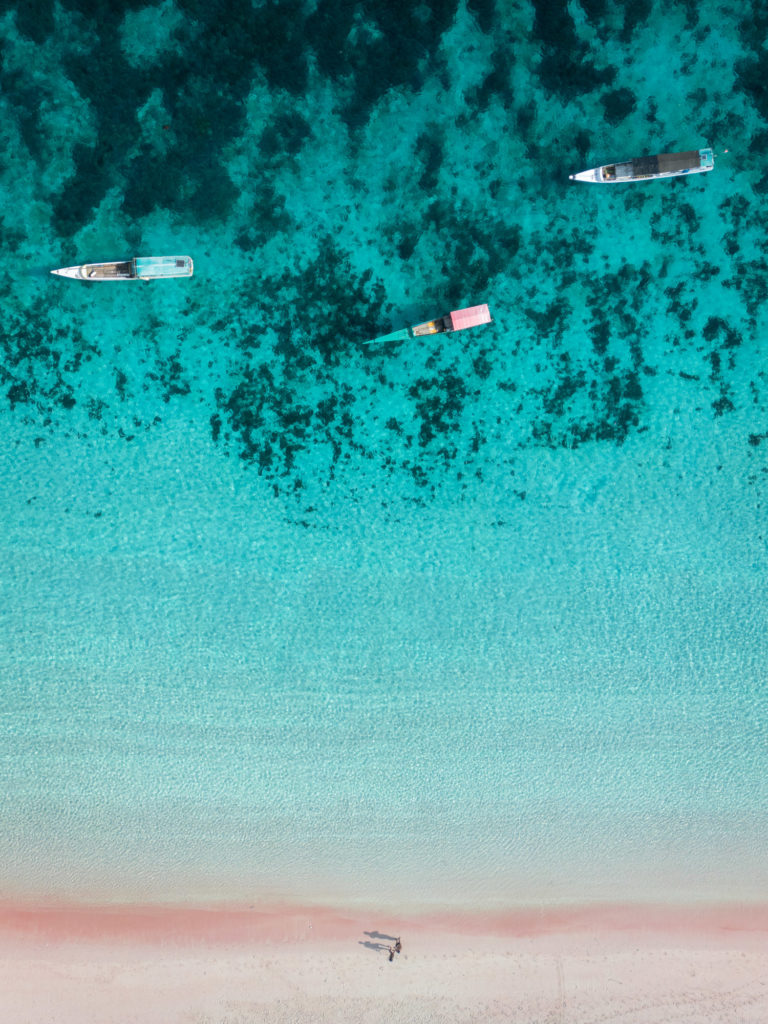
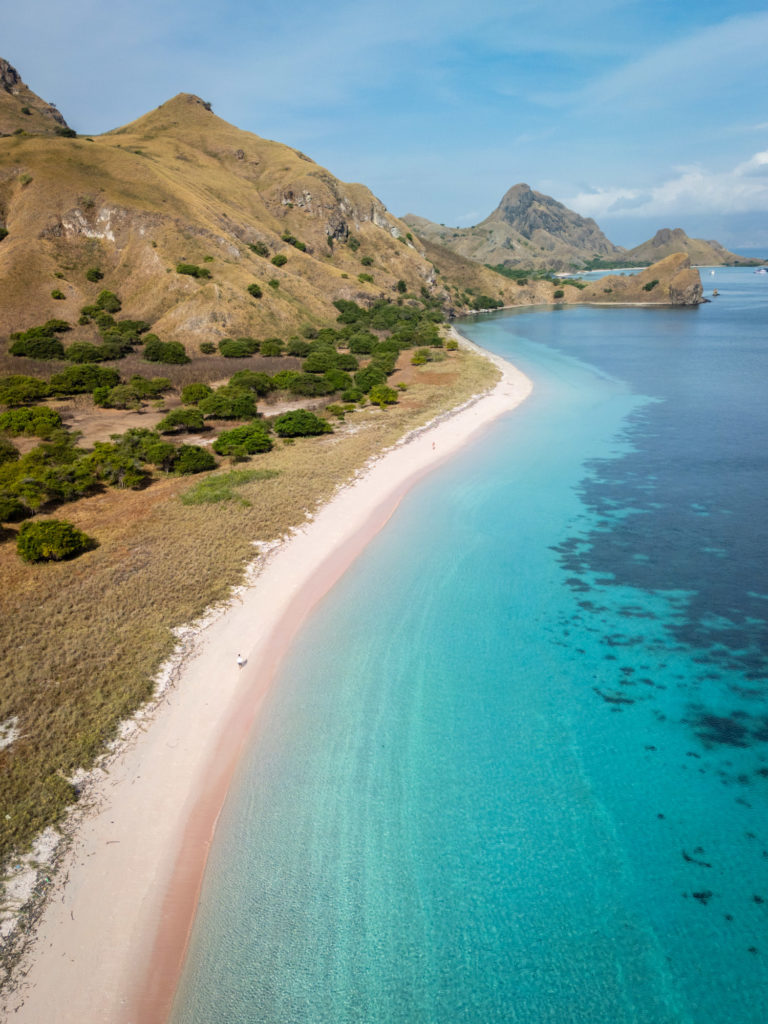

What to Pack for a Komodo Liveaboard Trip:
- Toiletries: toothbrush, toothpaste, shampoo and body wash. Most boats provide little or none, bringing your own means you’ll have what you actually like and it helps avoid sharing basic hygiene items. Our boat provided bath towels and for our surprise: hot water.
- Reef-safe sunscreen: you’ll be in and out of the water a lot and if you’re like Michiel, you will burn. Reef-safe formulas help protect marine life while keeping you sunburn free or at least trying to keep you sunburn free.
- This is something that I learnt from Michiel and we applied on our failed trip to Misool, bring with you a silk sleeping bag. Silk is naturally resistant to bed bugs because of its smooth texture and tightly woven fibers, harder for bed bugs to grip or hide in. And as well, to bring peace of mind and for hygienic reasons. From our experience in boats, the hygiene could always be improved.
- Extra toilet paper: you never know when supplies will run low or you will run to the toilet, boats don’t have always restock daily and it’s always better to have some in your bag “just in case”.
- Quick dry towel: perfect for frying off between swims or rising off after snorkeling. It dries fast and takes up little space and the best part, it doesn’t get musty.
- Your own mask and snorkel: we used our own mask and snorkel for comfort and hygiene, but we borrowed the fins from the boat, which worked like a mermaid.
- Power bank: charging ports are limited on most boats, a good power bank will keep your phone or camera going for the full trip. We were lucky enough to have a outlet next to our bed with energy 24/7.
- Headlamp or flashlight: although we used a headlamp on previous volcano hikes in Indonesia, for this trip we forgot to bring one, which have been helpful on the Padar hike. We used the phone flashlight and worked ok.
- Dry Bag: keep your phone, camera, drone, wallet etc dry and safe from splashes during transfers to shore or snorkeling trips.
- Reusable water bottle: most boats have large water containers for refilling, better for the environment and keeps you hydrated.
- Lightweight hoodie or windbreaker: it can be chilly at night or early morning, specially during sunrise hikes.
Komodo Liveaboard Practical Info & FAQ
Where does the trip start and end?
All livaboard trips usually start and end in Labuan Bajo, a small town on the western tip of Flores Island.
The easiest way is to fly from Bali (DPS). The flight takes about one hour.
April to October is the dry season—ideal for sailing, snorkeling, and diving. The sea is calmer and visibility is better.
No. Most trips, including ours, focus on snorkeling and welcome beginners. Life jackets are usually available, and guides are always in the water with you.
Yes. Our boat had both, including hot water. We had a private en-suite cabin, but facilities vary by boat—always check before booking.
It depends on the season and your sensitivity. If you’re prone to motion sickness, bring seasickness pills, just in case.
Most boats have limited power outlets. Ours had 24/7 power in the cabin, but we still recommend bringing a power bank.
Yes—as long as you follow the rangers. Guided walks on Rinca Island are mandatory and ensure safety.
Yes. Some liveaboards include it; others charge it separately. Confirm this with your boat operator.
We stayed on a traditional wooden liveaboard—simple, cozy, and authentic.
Usually not, though you might get some mobile coverage (Telkomsel) now and then.
Typically between 8 and 15 guests, plus the crew.
Many boats offer cold beers or allow you to bring your own. Ask in advance.
Yes, but you’ll need a permit and must pay a fee (around $125/day).
Related guides
Interested in exploring more of Flores and Komodo? Check out our other travel guides:
